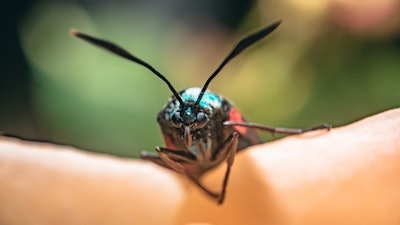
Last year was a doozy when it came to logistics challenges and 2021 seems poised for more supply chain pressures. The last thing you need during this critical time is a pest infestation that can destroy or contaminate products and slow down the delivery process. Even just one unchecked box or an undetected crack in a wall can allow pest into your warehouse and potentially contaminate goods.
Operating 24/7, facilities and warehouses along the supply chain are vulnerable to all sorts of pests. Rodents, for example, are always a concern. Many carry diseases and all are prone to gnawing on things, leaving feces and urine deposits. This is a risk not only to the materials you ship, but also to the facility itself. Flies, especially prolific during warmer weather, are possible in all types of facilities and can deposit bacteria every time they touch a surface. Roaches are notorious hitchhikers, hiding in boxes and finding ways to remain undetected while they multiply. Even birds can occasionally find their way in to disrupt your routine and threaten production.
You can proactively guard against these risks by remembering the five most vulnerable points in your supply chain and making sure your team follows preventive protocols to keep pests out.
1 Your suppliers. Consider the types of materials that flow through your facilities and know the pest threat to these products. For example, food manufacturers bring in tons of ingredients that are all potential introduction points and attractants for a variety of pests.
2 Your suppliers’ facilities. How much do you know about the facilities where your suppliers produce or store their goods and materials? The smallest crack or a door open too long can provide a tempting invitation for pests seeking shelter.
3 Your transport fleet. Even if your warehouse or manufacturing facility stays spotless, it remains vulnerable if your trucks don’t get the same level of sanitation scrutiny. Sourcing materials from new global partners can also be a source of new pest pressures. And, the longer goods are in transit, the risk just multiplies.
4 Packaging. Cardboard boxes are one of the first places you might spot pests in transit. Cockroaches can survive on the glue in packing boxes and tend to take shelter inside them.
5 Your warehouses. Your warehouses are a hive of activity, with loading docks opening and closing, transloading in constant motion, and storerooms sometimes holding shipments in tight spaces. These conditions flag multiple opportunities for pests to creep inside.
What are the best ways to manage these hot spots, so they don’t create unnecessary problems for your logistics? Here’s a checklist worth implementing:
· Ensure that your suppliers adhere to proper pest management practices that align with or exceed your own. It’s not a bad idea to visit them periodically to see their protocols firsthand and confirm that they take regular preventive measures to keep pests out.
· Inspect every delivery truck that enters your facility to be sure that pests are not hitchhiking inside.
· Do the same inspection for the trucks that leave your premises. You can be held responsible if the goods you ship out are contaminated en route on an untidy carrier.
· Check every box before it enters your warehouse. Look for gnaw or bite marks from rodents, pest droppings, spider or insect webbing and damaged or leaking containers. Use a black light to detect rodent urine on shipments.
· Inspect anything coming inside your facility - from reams of paper to snacks for your breakroom. Every incoming shipment presents the potential for a pest intrusion.
· If you spot a pest or evidence of one, immediately isolate the infested shipment and notify your supplier. Call your pest management partner so they can inspect the damaged delivery and provide a plan to mitigate the problem within 24 hours.
· Remove shipments from their packing containers while they are still on your loading dock and store goods inside on raised pallets or in open shelving away from the floor.
One thing is for sure—you can keep your facilities clean and enlist your entire team to watch for pest pressures with the right training and protocols. Here are some easy practices to help you do that:
· Implement training that educates all employees about pest pressures and how to spot and avoid them. Emphasize the value of risk management. Ask your pest management professional to help with this training.
· Insist on regular sanitation. A clean facility contributes to pest defense.
· Look outside. Pests originate from the outdoors, so make sure the environment around your facility doesn’t encourage pest hiding places. Maintain your landscaping and keep it away from buildings, regularly empty and clean garbage dumpsters and clear away any food debris or standing water.
· Audit the property and seal any opening that connects to the outside. Close cracks in walls and install door seals and sweeps.
· Practice first-in/first-out distribution. Your oldest products should always ship out first so that pests aren’t tempted to take up residence.
· Isolate problems. If you spot evidence of pest intrusion, isolate the product quickly to keep the issue from becoming more serious.
· If you manage multiple facilities, create a customized integrated pest management plan for each. Conditions at one site might differ from another.
When you think about it, your supply chain relies on multiple touchpoints and your reputation is only as strong as its weakest link. Partnering with a reputable pest management provider doesn’t just protect your facility from creepy, crawly intruders – it underscores the integrity of your business and its reputation for reliability.


















